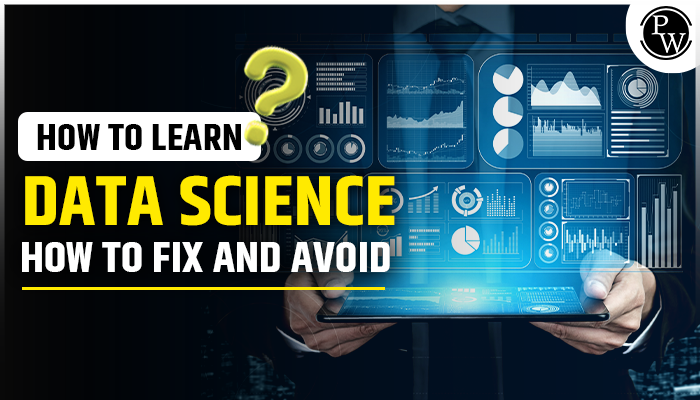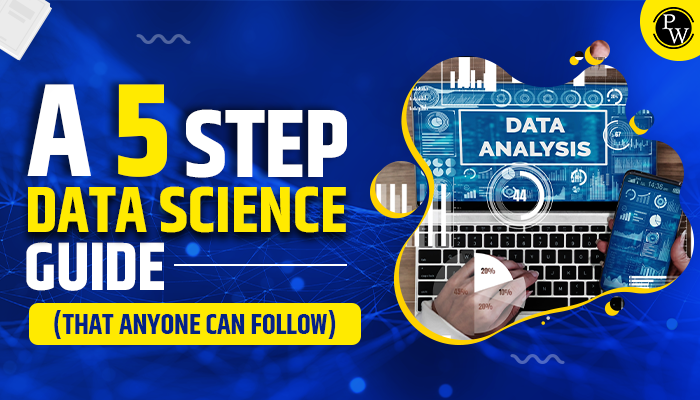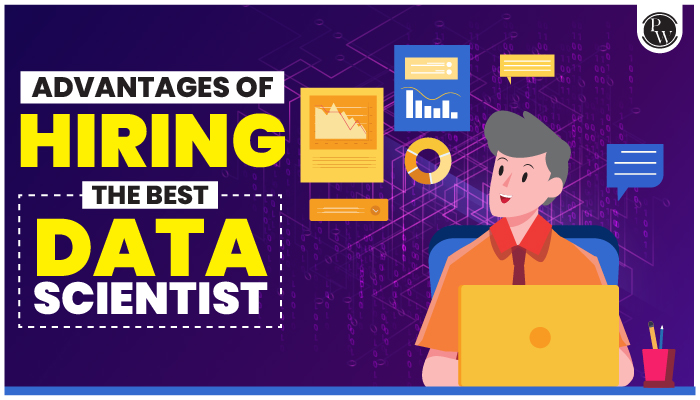Generative AI YouTube Channels offers content related to generative AI, contributing to the knowledge base in this field! Keep reading to learn about popular Generative AI YouTube Channels!
Generative AI YouTube Channels: Have you ever come across the phrase, “The most important thing in a data science career is to have a good mentor?” It speaks volumes about the journey of mastering Generative AI, especially as we tread into 2024, a year where this technology stands taller than ever.
Whether you’re an absolute beginner or someone well-acquainted with the world of zeros and ones, finding the right guidance is key. Amidst the ocean of information online, YouTube channels have emerged as lighthouses, guiding the curious and the ambitious towards the shores of expertise.

If you’re eager to take a step further, consider enrolling in the acclaimed ‘Data Science with Generative AI Course’ by Physics Wallah—an outstanding program meticulously designed to elevate your skills to new heights.
Generative AI YouTube Channels List
Navigating the realm of Generative AI is made more accessible through various YouTube channels that cater to learners, enthusiasts, and professionals seeking insights into the latest developments, tools, and techniques. These channels provide valuable content ranging from conceptual explanations to practical demonstrations. Here’s a curated list of YouTube channels that stand out in the landscape of Generative AI learning in 2024:
1) Two Minute Papers:
- Content Focus: Simplifying technical papers, especially in artificial intelligence.
- Notable Videos: Insights into OpenAI’s DALL-E 2 and the impact of AI on animation.
- Strengths: Easy-to-understand explanations, often accompanied by animations.
2) Matt Wolfe:
- Content Focus: Exploring AI, no-code, and futurism, including AI-related news and product reviews.
- Notable Videos: Covers a diverse range of AI-related content, engaging in discussions about the future of technology.
- Strengths: Captivating content, insightful discussions, and reviews of various AI tools.
3) DeepLearning.AI:
- Content Focus: Providing world-class AI education, sharing videos from free machine learning courses and events.
- Notable Videos: Curated playlists like “DeepLearning.AI Courses” and “Machine Learning Specialization.”
- Strengths: Founded by Andrew Ng, a prominent figure in machine learning and education.
4) AI Explained:
- Content Focus: Unraveling groundbreaking developments in artificial intelligence, emphasizing advancements surpassing human capabilities.
- Notable Videos: Delves into the latest research and transformative strides made by smarter-than-human AI.
- Strengths: Comprehensive coverage of significant AI news and developments.
5) Robert Miles AI Safety:
- Content Focus: Addressing AI safety concerns as the field progresses towards true Artificial General Intelligence.
- Notable Videos: Focuses on AI safety research, exploring potential risks and challenges.
- Strengths: Emphasis on addressing real-world challenges associated with AI advancements.
6) Nang:
- Content Focus: Making computer science and programming enjoyable and accessible.
- Notable Videos: Explains intricate concepts in a way that resonates with a broad audience.
- Strengths: Skill in breaking down complex ideas into understandable language.
7) All About AI:
- Content Focus: Teaching viewers how to harness the power of generative AI for creative and everyday tasks.
- Notable Videos: Hands-on demonstrations and discussions on practical applications of generative AI.
- Strengths: Focus on demystifying generative AI and integrating it into various activities.
As the landscape of AI evolves, these channels serve as valuable resources for those eager to stay informed and engaged in the dynamic world of Generative AI.
Best Generative AI YouTube Channels
Navigating the dynamic landscape of Generative AI is made engaging and informative through various YouTube channels. Here are some of the best channels that offer unique perspectives, tutorials, and insights into the realm of Generative AI:
1) AI Explained:
- Host: Philip
- Strengths: Philip excels at simplifying intricate ideas, making them accessible to all. The channel dives deep into the latest AI research papers, providing profound insights into the inner workings of AI. It’s a go-to resource for staying updated on the latest AI news and developments.
2) Aitrepreneur:
- Strengths: Aitrepreneur is a treasure trove for those keen on acquiring skills in using AI tools. The channel offers comprehensive tutorials that explore the usage of various AI tools, providing valuable insights, tips, and techniques to maximize their potential.
3) Olivio Sarikas:
- Strengths: Olivio Sarikas is an excellent source for gaining knowledge about AI tools. The channel covers diverse subjects, including Stable Diffusion, MidJourney AI, and Dall-E2. Viewers benefit from comprehensive tutorials that guide them through the setup and utilization of these tools.
4) MattVidPro:
- Strengths: MattVidPro has been a notable figure since the debut of OpenAI’s Dall-E2 in 2022. With consistent daily videos, the channel offers valuable perspectives on the tool, making it a valuable resource for enthusiasts and learners in the Generative AI space.
5) Two-Minute Papers:
- Host: Dr. Károly Zsolnai-Fehér
- Strengths: Dr. Károly Zsolnai-Fehér is a familiar name for those interested in AI and technology. Two Minute Papers provides concise yet insightful explorations into AI concepts and research. The channel is known for its easy-to-understand explanations and coverage of cutting-edge technology.
These channels collectively offer a diverse range of content, from news updates and research paper discussions to practical tutorials and tool exploration. Whether you’re a seasoned professional or a curious learner, these YouTube channels provide valuable resources for staying informed and engaged in the evolving field of Generative AI.
Also Read: Top 30 Deep Learning Interview Questions for Data Scientists
How Can I Learn Generative AI?
Learning Generative AI can be an exciting and rewarding journey. Here’s a step-by-step guide to help you navigate through the process:
Step 1: Build a Strong Foundation
- Prerequisites: Ensure you have a good understanding of basic mathematics, especially linear algebra, and probability. Familiarize yourself with programming languages like Python.
Step 2: Understand Machine Learning Basics
- Core Concepts: Gain knowledge about fundamental machine learning concepts such as supervised learning, unsupervised learning, and reinforcement learning.
Step 3: Explore Deep Learning
- Neural Networks: Delve into deep learning concepts and understand how neural networks function. Learn about layers, activation functions, and backpropagation.
Step 4: Specialize in Generative Models
- Study Generative Models: Understand the theory behind generative models. Focus on popular models like Variational Autoencoders (VAEs) and Generative Adversarial Networks (GANs).
Step 5: Hands-On Coding
- Practical Experience: Start coding. Implement basic machine learning algorithms and then move on to generative models. Platforms like TensorFlow and PyTorch are widely used.
Step 6: Explore GANs
- In-Depth GAN Study: Given the prominence of GANs in Generative AI, dedicate time to thoroughly understand how GANs work. Implement simple GANs and progressively move to more complex architectures.
Step 7: Experiment with Projects
- Apply Knowledge: Engage in small projects to apply your knowledge. Generate images, text, or music using generative models. Experimenting with projects enhances your practical skills.
Step 8: Learn about Applications
- Real-World Applications: Explore how Generative AI is used in various industries. Understand its applications in image synthesis, style transfer, text generation, and more.
Step 9: Stay Updated
- Follow Research Papers: Generative AI is a rapidly evolving field. Keep yourself updated with the latest research papers and publications. Follow conferences like NeurIPS, ICML, and ICLR.
Step 10: Join Communities
- Connect with Peers: Join online communities and forums where professionals and enthusiasts discuss Generative AI. Platforms like GitHub, Reddit, and specialized forums provide valuable insights.
Step 11: Online Courses and Tutorials
- Structured Learning: Enroll in online courses like PW courses and tutorials. Platforms like Coursera, Udacity, and edX offer courses on machine learning and deep learning.
Step 12: Advanced Topics
- Dive Deeper: Once you have a strong foundation, explore advanced topics like reinforcement learning, transfer learning, and domain adaptation.
Step 13: Build a Portfolio
- Showcase Your Work: Create a portfolio showcasing the projects you’ve worked on. This is crucial when applying for jobs or collaborations.
Step 14: Networking and Collaboration
- Connect with Professionals: Attend conferences, webinars, and meetups. Networking with professionals in the field can open opportunities for collaboration and learning.
Step 15: Capstone Project
- Final Project: Undertake a capstone project where you apply all your knowledge to solve a real-world problem using Generative AI.
Step 16: Seek Feedback
- Continuous Improvement: Share your work with the community and seek feedback. Continuous improvement is key in a dynamic field like Generative AI.
By following this step-by-step guide, you can systematically progress from foundational knowledge to advanced applications in Generative AI. Remember that consistency, hands-on practice, and a curiosity-driven approach are key ingredients for success in this field.
Also Read: Machine Learning Project Ideas for 2024
What is Generative AI for Content Creators?
Generative AI for content creators refers to the use of artificial intelligence models, particularly generative models, to assist or enhance the creative process of generating content.
This can include various forms of content such as images, text, music, and more. Generative AI models have the ability to create new and original content based on patterns and examples provided to them during training. Key aspects of Generative AI for content creators include:
- Generative Models: These are AI models designed to generate new content based on existing data. Popular generative models include Variational Autoencoders (VAEs) and Generative Adversarial Networks (GANs).
- Image Generation: Content creators can use generative models to produce realistic and novel images. For example, generating artwork, character designs, or even lifelike photographs.
- Text Generation: AI models can generate human-like text based on input prompts. This is used in various applications, from creative writing assistance to automated content creation.
- Music Composition: Generative AI can compose music by learning patterns from existing compositions. It can create new melodies, harmonies, and even entire musical pieces.
- Video Creation: AI models can assist in generating video content, from creating deepfake videos to generating animations based on provided input.
- Style Transfer: Content creators can apply style transfer techniques using generative models to transform the style of one piece of content (e.g., an image) to match the style of another.
- Interactive Design: Generative AI enables interactive design processes where content creators can explore various possibilities and make creative decisions based on AI-generated suggestions.
- Augmented Creativity: Generative AI serves as a tool to augment human creativity, offering suggestions, variations, and novel ideas that may inspire or complement the creative work of content creators.
For content creators, generative AI can be a valuable resource to overcome creative blocks, explore new ideas, and streamline the content creation process.
It opens up possibilities for innovation and allows creators to push the boundaries of their artistic endeavors with the assistance of intelligent algorithms. However, it’s important to note that while generative AI is a powerful tool, the creative intuition and decision-making of human creators remain irreplaceable.
Career Opportunities After Generative AI Courses
For those who want to take their skills to the next level, the Data Science with Generative AI Course by Physics Wallah stands out as a comprehensive option that combines theoretical knowledge with practical application.
After completing generative AI courses, individuals can explore various exciting career opportunities in industries that leverage artificial intelligence and creative technologies. Here are some potential career paths:
1) Generative AI Developer:
- Role: Develop and implement generative AI models for creating content, such as images, text, or music.
- Responsibilities: Code and train models, optimize algorithms, and contribute to the advancement of generative AI techniques.
2) AI Research Scientist:
- Role: Conduct research to advance the field of generative AI, explore new algorithms, and contribute to scientific publications.
- Responsibilities: Design experiments, analyze data, and collaborate with teams to push the boundaries of AI research.
3) Creative Technologist:
- Role: Combine technical skills with creative expertise to develop innovative solutions using generative AI.
- Responsibilities: Prototype and implement creative projects, collaborate with artists and designers, and explore novel applications of AI in the creative domain.
4) Computer Vision Engineer:
- Role: Apply generative AI models to analyze and interpret visual data, enabling machines to understand and generate images.
- Responsibilities: Develop computer vision algorithms, work on image recognition projects, and contribute to applications in various industries.
5) Natural Language Processing (NLP) Engineer:
- Role: Specialize in using generative AI for natural language understanding and text generation.
- Responsibilities: Build models for language processing, work on chatbots, sentiment analysis, and contribute to language-related applications.
6) AI Art Director:
- Role: Lead creative teams in designing AI-driven art projects, installations, or experiences.
- Responsibilities: Conceptualize projects, collaborate with AI developers, and oversee the artistic direction of projects blending technology and creativity.
7) Entertainment Industry Specialist:
- Role: Work in the entertainment industry, applying generative AI for special effects, animation, and immersive experiences.
- Responsibilities: Implement AI-driven features, enhance visual effects, and contribute to innovative projects in film, gaming, or virtual reality.
8) AI Consultant:
- Role: Offer expertise in generative AI to businesses seeking to integrate AI solutions into their processes or products.
- Responsibilities: Analyze client needs, recommend AI strategies, and provide solutions for incorporating generative AI into existing workflows.
9) Startup Entrepreneur:
- Role: Found a startup focused on leveraging generative AI for a specific industry or creative niche.
- Responsibilities: Develop a business plan, secure funding, and lead a team to bring generative AI innovations to market.
10) Educator/Trainer:
- Role: Share knowledge and expertise in generative AI through teaching, training programs, or online courses.
- Responsibilities: Develop course materials, conduct workshops, and empower others to learn and apply generative AI concepts.
As generative AI continues to evolve, the demand for skilled professionals in this field is likely to grow across diverse industries, offering a range of rewarding career opportunities for individuals with expertise in both artificial intelligence and creative applications.
For Latest Tech Related Information, Join Our Official Free Telegram Group : PW Skills Telegram Group
Generative AI YouTube Channels FAQs
What are Generative AI YouTube Channels?
Generative AI YouTube Channels are online platforms that focus on creating content related to Generative Artificial Intelligence. These channels cover a wide range of topics, including tutorials on using generative AI tools, discussions on the latest developments in the field, and insights into the applications of generative models in various domains.
Why should I follow Generative AI YouTube Channels?
Following Generative AI YouTube Channels provides you with valuable insights into the world of artificial intelligence, specifically in the generative domain. These channels offer tutorials, reviews of AI tools, discussions on research papers, and real-world applications. Whether you're a beginner or an experienced professional, these channels cater to diverse audiences interested in generative AI.
What are the most popular generative AI models?
Some popular Generative AI YouTube Channels include:
AI Explained
Entrepreneur
Olivio Sarikas
MattVidPro
Two-Minute Papers
How often do these channels upload new content?
The frequency of uploads varies across channels. Some channels provide daily content, while others may upload weekly or less frequently. It's recommended to subscribe to your preferred channels to receive notifications about new uploads and stay updated on the latest content.
Can I interact with the creators of these channels?
Yes, many YouTube channels encourage viewer interaction through comments sections. You can ask questions, share your thoughts, and engage in discussions with both the content creators and fellow viewers. Some channels may also have associated communities on other platforms where you can connect with like-minded individuals.




